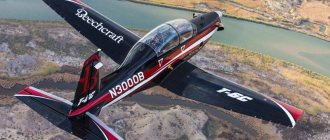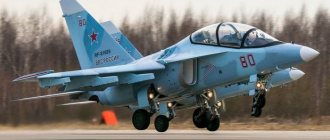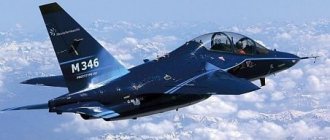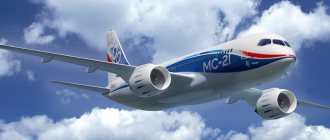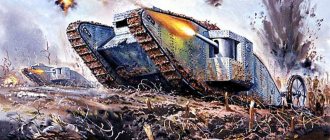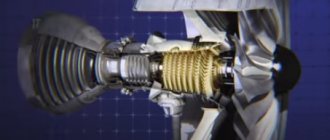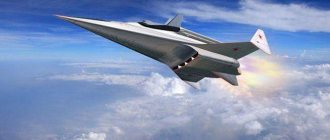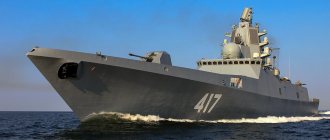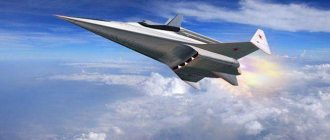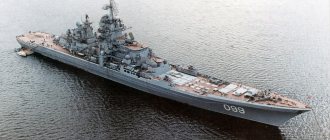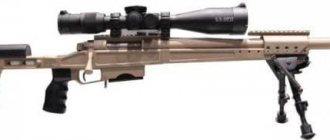One of the most successful training machines ever created in Russian aviation, the Yak-130 aircraft, has a complex and interesting fate. The first thoughts about creating an aircraft for pilot training arose even before the collapse of the Soviet Union, but the project was destined to survive a difficult time for the country, when any undertakings in both the civilian and military spheres were frozen or ended. But this aircraft was lucky enough to become the first completed project in New Russia. In 2010, the aircraft began to enter service with the army for pilot training.
Now we can safely say that the multi-purpose, training Yak-130 is not only a successful project of the country, but the main competitor for the global military industry. The machine is a development that, in practice, prepares pilots to fly attack aircraft and fourth- and fifth-generation fighters (both Russian and foreign-made).
History of creation
Since the early 70s of the 20th century, the Soviet Air Force used Czechoslovak-built L-39 aircraft to train pilots. They were equipped with dual-circuit engines, which were imported from the USSR. Czech training vehicles were used in all Warsaw Pact countries.
But this aircraft became outdated so quickly after entering service that in the mid-80s it was seriously inferior to reality. Then the first thoughts arose that a new machine was needed, which would not only prepare for flights on aircraft of that time (fourth generation: Su-27 and MiG-29), but also allow it to cover future generations of military aviation.
The collapse of the Soviet Union had a big impact on the project. The new car lacked financing. And although the competition was announced at the height of events, in 1990, most of the country’s design bureaus took part.
Projects began to be developed by the Sukhoi Design Bureau, the Mikoyan Design Bureau, the Yakovlev Design Bureau, as well as the Myasishchev EMZ.
Sukhoi proposed the UTS S-54 aircraft, which flew at supersonic speed, but was not accepted by the commission due to the fact that it trained pilots exclusively in medium and advanced piloting programs. The designers of the bureau believed that it was impossible to implement the entire training cycle in one machine. This opinion, by the way, is still considered unrefuted.
And the Mikoyan Design Bureau began to build an economical aircraft. This made the MiG-AT project cheap and simplified.
EMZ Myasishchev presented the M-200, which was distinguished by a high level of software. In fact, this training aircraft was a whole complex of training, as it also involved serious ground training in special classes.
Yakovlev presented the commission with the UTS-Yak, which later became today's Yak-130. It was also equipped with an advanced computer modeling system, as well as training complexes on the ground. In addition, the model paid increased attention to the creation of simple and autonomous mechanisms for easy maintenance of machines.
The competition itself was an ordeal. The conditions of the collapsing economy left their mark. The members of the commission were under pressure, since each concern understood that new projects would allow them to continue working and survive, so it was important to obtain guarantees of new orders. During the ups and downs, preference was given to the projects of Yakovlev and Myasishchev.
It is believed that the commission removed the work of Sukhoi and Mikoyan from continuing the fight, since they were already making fighters for government and export orders.
However, later Myasishchev’s project was excluded and Mikoyan’s work was taken over. The reasons for this decision are still unclear.
Further tasks simplified the work of the design bureaus. Thus, the requirements for speed during landing were relaxed (acceptable indicators increased to 180-190 km/h), the length of the required runway was also adjusted (increased to 700 m). The ferry range became half a thousand kilometers shorter, and the requirements for the angle of attack were 25 degrees.
But due to financing problems, Yakovlev continued the project in collaboration with the Italian company L'Alenia Aermacchi. The Mikoyan Design Bureau also turned to European partners for help. Only they worked in close collaboration with French engineers.
But the Yakovlev Design Bureau and the Italians soon stopped collaborating. L'Alenia Aermacchi withdrew from the project and took away part of the technical documentation. Later they made the M-346 aircraft, which is now the main competitor of the Yak-130.
Both the Russians and Italians brought their projects to completion. At the Yakovlev Design Bureau in 1996, the Yak-130 was assembled and sent on its first test flight. Its airframe and wing were no different from the M-346 (externally the planes have virtually no differences), but the equipment and engines were installed on their own.
After numerous tests and design improvements, the Yak-130 was recognized as the winner of the competition.
This happened in 2001, and made it possible to become the first training aircraft in the history of Russia, made from scratch, and not modified according to projects left as a legacy from the USSR.
In 2004, deliveries of the Yak-130 began as training aircraft to regular units. And 2011 was marked by the creation of a light attack aircraft based on the training model. Today the Yak-130 is in great demand. Only in Russia it is planned to put it on combat duty and as a training aircraft in the amount of 250 units. Orders have already been placed for 100 units. Global demand is estimated at 2,500 units.
Production has been launched at a plant in Nizhny Novgorod and Irkutsk (mainly, it is intended to target its products for export). The approximate cost of the Yak-130 for the Russian Air Force is estimated at 7.5 million US dollars. The export price is 15 million US dollars.
On choosing an aircraft for basic pilot training
The article was written as a continuation of the article “TCT with a theater of operations - the ability to count money” (“Aviapanorama”, No. 1-2010)
Author of the article: Vitaly Selivanov
, Deputy Head of the LIK OSKBES MAI for flight work, Honored Test Pilot of the Russian Federation
Almost all countries of the world, starting from the end of the last century, switched to training aircraft (TCA) with turboprop engines (TPE) in the basic training of young pilots. This transition is caused by two main requirements of our time: increasing flight safety and reducing operating costs.
IN THE USA
abandoned the long-term use of the T-37 twin-engine turbojet training aircraft. In 2015, the United States completed a program to transfer the Air Force and Fleet Aviation to the T-6 basic training aircraft and purchased the last of 900 units produced in the country. The use of new theater-mounted vehicles will save $500 million in the defense budget.
In the USA, initial flight training of 20-40 hours is carried out on light-engine aircraft (DA-20) and gliders. Further, after graduating from an academy or university, basic training is carried out at Air Force and Navy training air bases with 155 hours of flight time on T-T- 6 TexanII and then advanced training on the T-38 supersonic combat training aircraft.
To save the service life of the T-38 advanced training aircraft, the flight time on the T-6A TexanII theater training equipment has been increased from 90 to 155 hours, and on the T-6B to 180 hours.
France
abandoned the use of the Fouga-Majister turbojet during the main training in favor of training equipment with a high-pressure engine, but first used its lightweight, one-and-a-half-ton training engine with a high-pressure engine Omega TV-31 (55 units were produced). After which it purchased 50 Tucano aircraft in the EMB-312F version. At the customer's request, Embraer modified the aircraft, increasing the airframe's service life to 10 thousand hours and installing new avionics equipment. EMB-312F aircraft served in the French Air Force until the end of the last decade; now American T-6s operate instead of Tucanos. It turns out that France is already using the third generation of theater training equipment as a basic and initial training aircraft.
England
. BAe offered PilatusPC-9 aircraft back in 1984. to replace Jet Provost turbojet aircraft, but this order was won by the ShortsTucano. BAe then retained the rights to equip Swiss-made aircraft and to offer them as replacements for Hawk jet trainers.
An agreement between Brazil and the UK allowed for the licensed construction of Tucano aircraft at British production facilities owned by Short. Before signing the contract, Embraer and Short modified the original design by installing a new Garrett TPE331-12B turboprop engine with 820 hp. The resulting S.312 Tucano aircraft entered service in 1988, and 130 aircraft of this type were built.
On 2 February 2016, the UK Ministry of Defense awarded a £500 million contract to AffinityFlying Services to provide initial and core training for UK Armed Forces pilots as part of the new UK Military Flying Training System (UKMFTS). The initial stage of flight training will be carried out on 23 light trainers with Grob G120TP theater engines.
The main stage of flight training will be carried out on ten Beechcraft T-6C Texan II theater trainers (future fighter pilots will be trained on them) and on five converted Embraer Phenom 100 “business jets” (future pilots of multi-engine aircraft). Training on them will replace current training of Royal Air Force pilots on the Grob G115E, Short Tucano T.1 and Beechcraft KingAir 200/350 aircraft respectively.
The next, advanced stage of flight training within the UKMFTS will be provided by the Royal Air Force itself on the BAE Systems Hawk T.2 combat training aircraft (combat aviation pilots) and the Beechcraft KingAir 350ER (navigator and operator personnel of naval aviation).
AffinityFlying Services' proposal for UKMFTS initial and core training was selected following a competitive bidding process for the use of upgraded Grob G115E and Pilatus PC-21 aircraft.
| Pilot training in Britain |
| Source: Aviapanorama |
The first aircraft will arrive in the first quarter of 2022. The new machines will be an addition to the Beechcraft KingAir 350ER. The military version of the Beechcraft T-6C is a modernization of the T-6A with updated cockpit avionics - the aircraft is equipped with a heads-up display, a control panel and three multifunction displays. It is noted that this aircraft can carry out training flights using air-to-air and air-to-ground weapons, and it is possible to install external fuel tanks. This transition is driven by two main conditions: improving flight safety and reducing operating costs.
Germany, Israel, South Africa, Canada, Greece, New Zealand, Australia, Morocco and most other countries with combat aviation switched to theater-mounted training equipment during the basic training of pilots. The last to switch was India (which has its own theater-of-training technology), having purchased 75 aircraft. Pilatus PC-7 Mk.2 from Switzerland, and expects to purchase another 106 machines with assembly in India. Currently, the total flight time of the Indian PC-7 Mk.2 fleet is 40 thousand hours during 80 thousand flights. The presence of training equipment with the PC-7 Mk.2 theater made it possible to increase the flight training program by 220%.
There are only two countries left in the world that do not have a theater-mounted vehicle—Russia and China.
Theatre-mounted aircraft, as primary training aircraft, have been in mass operation for more than 30 years and have confirmed their safety and efficiency.
Unfortunately, our main customers, pilots in the leadership of the Aerospace Forces, pilot instructors in schools and pilots of combat units began flight training at the school immediately (without initial training) on L-39 (L-29) jet aircraft and then on combat aircraft. An airplane with a propeller remained in their memory as an anachronism, seen only in historical films. And they can be understood: indeed, flying airplanes with a jet engine seems easier. Their demand to teach young pilots the same way they were taught is psychologically justified. But you need to look wider and further: take into account not only your limited domestic experience, but also world experience. Unfortunately, not enough attention is paid to the study of foreign experience in training personnel in the HQS.
The concept of a promising flight training system for Air Force pilots and navigators, approved by the Air Force Civil Code on December 24, 2001, actually reflects global trends in the development of flight training methods and aviation technology in the training of military pilots.
The concept provided the following:
a) training complex for initial training (UTC PNP);
b) the basic training complex (TC OP) in two versions with a theater engine and with a turbojet engine (however, it should be noted that there is no global practice of developing and using aircraft with a turbojet engine in the basic training in the 21st century);
c) advanced training complexes: for front-line aviation (UTK FA); TCs currently being developed as part of a training or combat training aircraft (MiG-UTS or Yak-130), classrooms, procedural and flight simulators of the aircraft, a procedural simulator of the weapons system and a specialized combat simulator.
The transition to a promising flight training system should be carried out in stages.
At the third stage (after 2010), it is necessary to replace the decommissioned L-39, L-410 aircraft and the corresponding ground-based technical training equipment with a single OP TC.
In the interests of timely reform of the flight training system, it is necessary to carry out a set of research and development work in order to create promising training complexes:
- in the period up to 2005, conduct research on the TC OP;
-in the period from 2005 to 2010, carry out development work on the TC OP.
The transition to a promising flight training system will allow:
-reduce the cost of training a combat-ready front-line and long-range aviation pilot by 20...25%,
-reduce the type of aircraft used in training Air Force pilots.
The concept was implemented only for the advanced training aircraft Yak-130 and, with a great delay, continues for the initial training aircraft Yak-152. Neither research nor development work has been carried out and is not planned for basic training on the aircraft.
The most common UTSS theater systems in the world
T-6 Texan II, USA
This is a licensed copy of the Pilatus-9 aircraft, modified in the USA, the most widespread model of a high-pressure aircraft with a turboprop engine with a moderate cost (about $6 million). The T-6A Texan II effectively delivers a 155-hour training course that includes flight training and initial weapons proficiency. The aircraft is currently being produced in a modernized version of the T-6B, which can be used as a training and light attack aircraft, and is offered for export (the US Navy's T-6B program already includes 180 flight hours). As planned, the T-6 vehicles will be in operation after 2050.
| T-6C Texan II training aircraft. 12th Dubai Air Show. Photos from the sites fightglobal.com and militaryphotos.net |
By 2016, 900 vehicles had been produced (of which 453 for the US Air Force and 328 for the Fleet Aviation). Based on the T-6, the AT-6B attack aircraft was created, 500 of which are planned to be sold to 26 countries within 10 years.
| Cabin of the T-6V UTS |
| Source: Aviapanorama |
Pilatus PC-21, Switzerland
This is the most technically advanced development by Pilatus, the last in this class today. The RS-21 aircraft - a theater training device with a powerful 1600 hp engine, a lightweight landing gear, a trimmed wing and a maximum speed of 685 km/h, a maximum load factor of 8 and with modern equipment - practically covered the range of use of such a famous aircraft as the L-39 . But the take-off weight of the aircraft increased to 4 tons, and the price of this aircraft, $16 million, turned out to be very high. This has been confirmed by sales practice. In 8 years, only 8 aircraft were sold. On such an aircraft, it will apparently be necessary to abandon the use of unpaved runways (landing speed 170 km/h, lightweight landing gear with high-pressure tires).
| The first turboprop trainer aircraft built for the Royal Australian Air Force, Pilatus PC-21 (Australian tail number A54-001/01, serial number 234, temporary Swiss registration HB-HWA) on its first flight. Stans (Switzerland), 07/21/2016 |
| Source: Pilatus Aircraft |
Considering that the number of accidents during landing is approximately proportional to the cube of landing speed, the RS-21 lost not only in cost, but also in the second of the main criteria of a basic training aircraft - safety. Therefore, it began to be considered as an advanced training aircraft. Indeed, after the RS-21, Arab pilots immediately begin to master the F-18 combat aircraft. Active marketing work made it possible to sell it first to the richest Arab countries (UAE, Saudi Arabia, Qatar) and Singapore, and then to Australia and Jordan.
| The cockpit of the Pilatus PC-21 aircraft |
| Source: Aviapanorama |
Pilatus-7 Mk2, Switzerland
This machine with a Pilatus-9 fuselage, a wing and a 650-horsepower engine turned out to be in great demand on the flight training market. It was first ordered by South Africa and Austria, and then purchased by India. Pilatus-7 Mk2 most fully meets the main criteria of a basic training aircraft: high safety and low cost.
| Pilatus P-7Mk2, with South African markings |
| Source: Aviapanorama |
| Pilatus P-7Mk2, with South African markings |
| Source: Aviapanorama |
Embraer Tucano aircraft, Brazil
Embraer Tucano training aircraft and attack aircraft have been in service for more than 30 years. Over these years, the aircraft was built in large series and supplied to the armed forces of Brazil and other countries. New aircraft from this company are almost 1 ton heavier and can carry a payload of up to 1.5 tons; they are used as counter-guerrilla aircraft and light attack aircraft.
Work on the EMB-312 project began at the very beginning of 1978. It was planned to create several types of aircraft for various purposes based on a single design. From the very beginning, it was planned to develop and put into series a training aircraft and a light attack aircraft.
In 1983 Brazil has adopted an aircraft based on EMB-312 - the T-27 Tucano trainer aircraft, with a Pratt Whitney Canada PT6A-25C engine with a power of 750 hp. For the convenience of the crew in hot climates, the aircraft is equipped with a freon air conditioning system driven by engine.
The first EMB-312 aircraft turned out to be quite light - the empty weight does not exceed 1870 kg. The normal take-off weight of a training aircraft is 2550 kg, and with the maximum amount of fuel and full combat load it increases to 3200 kg. The 750-horsepower theater engine provides the aircraft with performance at the level necessary to perform its assigned tasks. The EMB-312 can accelerate to 448 km/h and has a cruising speed of 400-410 km/h. The aircraft's service ceiling is 9150 m, its practical range is over 1800 km. When fully fueled and with external tanks, the ferry range exceeds 3,300 km.
To convert a training vehicle into a strike vehicle and vice versa, it is necessary to attach or remove the necessary weapons and carry out minor preparatory work. The combat load is placed on four underwing units, the normal load of each is 250 kg. The EMB-312 aircraft in the attack version can use machine gun containers, unguided rockets and bombs.
The Brazilian Air Force ordered 133 aircraft in 1983. The T-27 Tucano aircraft was purchased by Iraq and Egypt (80 and 40 aircraft, respectively). Subsequently, EMB-312 aircraft of various modifications were built for Venezuela, Honduras, Argentina, Iran, Colombia and other countries.
Under an agreement between Brazil and the UK, Embraer and Short finalized the original project. Thanks to this, the maximum speed of the aircraft reached 610 km/h, and the cruising speed increased to 510 km/h. Other flight characteristics have changed slightly. The resulting S.312 Tucano entered service in 1988. 130 vehicles of this type were built.
In the early 1990s, Embraer further improved the EMB-312 aircraft. The modernized trainer or attack aircraft received a Pratt&Whitney Canada PT6A-68C turboprop engine with a power of 1600 hp. with a 5-blade propeller. The airframe structure was significantly strengthened, its service life increased to 12-18 thousand hours. The cockpit received Kevlar protection and new equipment, including liquid crystal displays. The empty weight of the Super Tucano has increased to 3,200 kg. Maximum take-off weight – up to 5400 kg. The maximum speed of the EMB-312H aircraft reached 590 km/h, cruising speed – 520 km/h. With normal refueling, the aircraft is capable of covering over 1,500 km, the ferry range is about 2,800 km.
The modernization significantly improved the combat qualities of the strike version of the aircraft. First of all, it should be noted that the Super Tucano received two built-in 12.7 mm FN M3P machine guns in the wing root. Five hardpoints (four underwing pylons and one under the fuselage) can accommodate a combat load with a total weight of up to 1550 kg. The range of weapons suitable for use by the EMB-312H aircraft includes machine gun and cannon containers with weapons of caliber from 7.62 to 20 mm, guided and unguided bombs and missiles. For self-defense, the attack aircraft can carry guided air-to-air missiles. Thus, the new light attack aircraft, unlike the previous Tucano model, is capable of striking not only with unguided weapons, but can destroy a wide range of targets, including fortifications, armored vehicles and enemy front-line aircraft. The new aircraft was renamed EMB-314.
In 2001, Brazil became the launch customer for Super Tucano aircraft. From the end of 2003 to mid-2012, 99 aircraft were delivered to it. The Brazilian Air Force uses these aircraft to search for and, if necessary, destroy drug cartel vehicles. Often, attack aircraft have to take on the functions of fighters and force planes with illegal cargo to land. Pilots of Super Tucano aircraft are legally empowered to shoot down smugglers.
This aircraft has been widely used in recent local conflicts. In 2008, another EMB-314 aircraft was purchased by the US Special Operations Command to study its capabilities. In February 2013, a contract was signed with Embraer, according to which the aircraft will be built under license at one of the American enterprises. It is planned to build 20 attack aircraft (A-29), which in the future will support special units from the air.
Over three decades, a total of almost a thousand cars of various modifications were produced. The total number of EMB-312 aircraft exceeded 650 units. British aircraft manufacturers built about 150 Short Tucano trainers. Finally, over the past 10-12 years, Embraer has built and delivered about 160-170 Super Tucano aircraft to customers.
| The first Embraer A-29A (EMB-314) Super Tucano turboprop light attack aircraft, received by the Afghan Air Force from the United States as part of military assistance. Bagram, 01/15/2016 |
| Source: Anadolu Agency / gettyimages |
KT-1, South Korea
It made its first flight on December 12, 1991, and in 1999, the Republic of Korea Air Force approved the purchase of 85 serial training equipment, designated KT-1 Ungbi. The last aircraft were delivered in 2002. KAI exported 12 KAI KT-1B aircraft to Indonesia. A larger order came from Turkey - for 40 KAI KT-1T aircraft, with an option for another 15 aircraft. The first five aircraft were built by KAI in the Republic of Korea, the rest were assembled by the Turkish Tusas Aerospace Industries.
| Basic training trainer KT-1P |
| Source: www.fap-club.com |
Diamond Dart-450, Austria
DART-450 (Diamond Aircraft Reconnaissance Trainer, reconnaissance training aircraft) made its first flight this year. In its appearance and size, the DART-450 looks like an exact clone of the famous Pilatus PC-7 training aircraft (by the way, in service with the Austrian Air Force). The DART-450 has a Ukrainian 450 hp turboprop engine, an all-composite design, and a number of original design solutions, including lightweight pneumatic ejection seats developed by Martin-Baker. The two-seat tandem cockpit is equipped with a Garmin avionics system and a side control stick (at the customer's request, a regular central control stick can be installed). Space has been reserved for installation under the fuselage of a gyro-stabilized electro-optical surveillance system; two external suspension units can be installed under the wings.
| The first prototype (OE-VDA registration) of the Diamond DART-450 turboprop aircraft on its maiden flight. Wiener-Neustadt (Austria), 05/17/2016 |
| Source: Diamond Aircraft Industries |
The empty weight of the DART-450 is, depending on the version, from 1150 to 1330 kg, the maximum take-off weight is 2300 kg. The length of the aircraft is 10.75 m, the wingspan is 11.74 m, the height is 3.38 m. The maximum speed is 250 knots (465 km/h), the ceiling is 7100 m. It is stated that with a maximum fuel supply of 850 liters the aircraft will be able to remain in the air up to 8 hours, maintaining a 30-minute fuel reserve. The flight range with the same reserve can reach 2890 km. The permissible overload from +7g to -5g will allow the aircraft to be used as an aerobatic aircraft.
According to the developers, this aircraft will cost $3 million, and the cost of a flight hour of the aircraft will supposedly not exceed $500. So far, this aircraft is the cheapest theater-mounted aircraft. But buyers need to remember that composite materials require careful handling and hangar storage, which can be confirmed by the experience of operating Diamond aircraft at the Ulyanovsk Higher School of Civil Aviation.
Certification of an aircraft with a Ukrainian engine according to EU standards may make it possible to enter the fast-growing Asian aviation market. Today, negotiations are actively underway on the sale of the licensed production of the AI-450S engine to China. Other countries in Southeast Asia and Latin America have shown interest in DART-450. Therefore, the prospects for this project already look very encouraging. While the Dart-450 awaits certification, it plans to produce three more units by the end of the year, followed by 10 to 12 aircraft in 2022.
OmegaTV.31, France
When developing new TC with a high-pressure engine, it is necessary to take into account the experience of not entirely successful attempts to sell a new CB with a high-pressure engine. Thus, France, having an aircraft of its own design, the Omega TV.31, was forced to first purchase the Tucano, but eventually switch to the American T-6. South Africa did the same, having its own flying prototype of a theater-mounted vehicle, understanding how much it would cost them to fine-tune the prototype to mass production, they purchased the R-7Mk.2 (the lifting of sanctions from South Africa also helped). But India, having purchased the Pilatus-7, continues to work on fine-tuning its prototype of the theater-mounted vehicle, despite the resistance of the Air Force leadership, who really liked the Swiss Pilatus, despite the seller’s ban on installing weapons on them.
| UTS Omega TV.31 |
| Source: Aviapanorama |
Grob G. 120TP, Germany
The two-seat, single-engine trainer aircraft is manufactured by GrobAircraft, which offers an effective and cost-effective solution for training military aviation pilots. The G. 120TP aircraft is designed to perform both basic pilot training tasks and aerobatics. Made from composite materials.
| G120TP training aircraft. Source: grob-aircraft.eu |
The Grob G. 120 model aircraft made its first flight in 1999, and after some optimization, it almost immediately entered mass production, where it remains today. It is used in civil aviation and is actively used in military aviation of several countries, where it is used mainly for training military pilots. As of 2015, the air forces of six countries use about 70 aircraft of this model.
| G-120TP trainer aircraft |
| Source: en.wikipedia.org |
TC with TVD, not widely used
| Orlik MPT (Multi Purpose Trainer) |
| Source: www.altair.com.pl |
| UTS L-90tl, Finland |
| Source: Aviapanorama |
| TCB Fantrener, Germany |
| Source: Aviapanorama |
* * *
The vast world experience in creating a TC with a theater of propulsion must be taken into account by the developer in full; all achievements and errors must be taken into account. Let me remind you that it is very important to correctly draw up the technical specifications for the aircraft, to formulate exactly what we want to get as a result! Then you can really calculate your capabilities, costs, deadlines and results. A demonstrator aircraft or, as they now say, a “technological platform” will be very helpful in determining the face of a theater-mounted vehicle.
Let us carry out a simple analysis of the criteria for selecting a vehicle with a theater.
The main reason for choosing a turboprop engine is its low weight with sufficient thrust, efficiency (the larger the volume of air and the lower the speed at which the power plant is thrown, the higher its efficiency) and a long service life, without limiting the number of repairs. The propeller makes it possible to achieve reverse thrust almost without cost or increase in weight, which reduces the length of the run, reduces the requirements for home airfields, and simply eliminates cases of running off the runway, and reduces wear of tires and brakes. The main disadvantage of the propeller - travel moments - is eliminated by selecting the installation angles of the propeller axis and providing automatic trimming in the travel channel.
Let's compare the trainer with the theater by weight: the lightest aircraft are, as a rule, the cheapest aircraft, converted from piston engines, with an unpressurized cabin, PNP trainer. Further, the weight of the aircraft increased and along with it the price of the aircraft and maximum speed grew, the equipment was improved, the engine thrust increased and the result was the RS-9, also known as T-6, aircraft that was close to optimal, and the more economical RS-Mk.2. With further improvement, the weight and price increased again, and in the end we got the RS-21 with a weight of 4250 kg, a speed of 685 km/h, a stall speed of 170 km/h and a price of $16 million. This is no longer a basic training aircraft, but an advanced training aircraft. Hence, sales of the aircraft amounted to 8 units over 8 years, and only very rich countries finally allowed themselves to take into account that the quality does not lag behind the price and accepted the aircraft as an advanced training aircraft. The increase in the weight of the Super Tucano compared to the Tucano 12 resulted in an increase in payload weight by 1.5 times to 1500 kg. This is good for a combat aircraft, but it is unlikely to be necessary for training equipment.
Practice shows that training equipment with theater engines can be divided into two groups.
The first group is aircraft with a take-off weight of up to 1.5 tons and with an unpressurized cabin, which are more suitable for the initial training of student pilots.
The second group is aircraft with a take-off weight of more than 2-2.5 tons with a pressurized cabin and simple weapons, which can be classified as basic training aircraft. At the same time, in the second group, aircraft with a normal take-off weight increased by more than 3 tons, with increased speed, overloads and maneuverability, move into the subgroup (class) of advanced training aircraft (for example, RS-21). And aircraft with increased armament and armor are closer to light attack aircraft or special combat training aircraft (Super Tucano EMB-314).
Flight hour price. One of the most important indicators of the economic efficiency of an aircraft is the cost of a flight hour. The easiest way to get the price of a flight hour on the Internet, when ordering a flight, is to ride the plane. So, a glider costs 200-250 rubles per minute (including the use of a B-35 towing aircraft). Yak-18T aircraft will cost 300 r/min, Cessna 172 with kerosene diesel – 200 r/min, Sigma4 – 150 r/min. This is the price of renting an aircraft with a pilot, an airfield, navigation and even profit, based on the actual market conditions in the Moscow region as of October 2016. According to the experience of operating the M-101T Gzhel turboprop aircraft in aviation, the technical price of a flight hour in 2008 was only 9000 rubles ($300) or 150 r/min. This price included the costs of depreciation, repairs, maintenance and fuel. But in 2009, the aircraft was taken out of service and replaced with a more spacious, 9-seat RS-12.
The altitude of the aircraft is primarily needed to provide altitude reserve when learning complex aerobatics and spins (increasing time to correct errors). The optimal flight altitude is 3-6 thousand m. It is provided by a pressurized cabin. A sealed cabin is also needed to practice skills in flights at high altitudes. Almost all aircraft with a take-off weight of less than 2 tons remain with an unpressurized cabin, and therefore can be used as initial training aircraft. There is a widespread opinion, especially among designers, that in the presence of oxygen it is possible to fly unpressurized aircraft at medium and high altitudes, even with passengers. The experience of long flights at a flight level of 7600 m on the first experimental M-101T "Gzhel" aircraft with a limited difference (less than 0.2), with low excess pressure in the cabin and an altitude in the cabin of more than 4000 m, was noted by test pilots as uncomfortable flight conditions. Such working conditions are unacceptable for pilot instructors and cadets. TS operating at altitudes above 3000m will require a sufficient rate of climb, 15-20 m/s, so as not to waste unnecessary time on an empty climb, as well as to ensure the execution of flight complexes without loss of altitude. Therefore, they must have an engine power of at least 700-800 hp with a take-off weight of 2500 kg. with good aerodynamic quality.
In aircraft with an operating altitude of more than 4000m, oxygen is required for pilots; it is better to install an oxygen production station that does not require constant refueling before the flight and additional special equipment at the airfield.
Of course, you need a system that ensures the operation of anti-overload equipment.
The main work when training cadets occurs in the hot summer months (we have a pilot school in Krasnodar). You need good air conditioning, no worse than on the EMB-312 aircraft. Otherwise, the temperature in the instructor’s cabin while taxiing between circling flights in the summer heat can reach 70º C.
All modern combat aircraft steer using a steerable nose wheel. For flights in winter Russian conditions, which is almost half of the year, a steerable nose wheel is also required. It also simplifies the requirements for the emergency braking system and increases flight safety (take-off, landing, taxiing). On airplanes with a lever suspension of the nose wheel, the wheel steering control mechanism is heavy. Therefore, all vehicles with high-pressure theaters use nose struts with telescopic shock absorbers and a simple turning mechanism without hydraulic booster, through a spring rod and automobile-type wheel brakes, with foot pedals without connection to high-pressure hydraulic systems. All this allows us to ensure good controllability of the aircraft when moving on the surface, simplicity, reliability, low weight and, therefore, cost.
Ejection seats. It is tempting to use a seat with an air ejection system if it provides a “0 to 0” escape - no SAPS service is needed, no warehouses and permits for pyrotechnics are needed. For DOSAAF aircraft and small organizations this is very important, and the cost of maintenance is lower.
TCB should ensure the most active work, mass flights in the summer months. To expand the capabilities of the school, field (camp) airfields were previously used. The aircraft must be able to fly from compacted ground. This is especially important for countries with an undeveloped airfield network.
The presented design of the cockpit canopies is interesting, but it must be remembered that the front part of the canopy in front of the pilot of the first cabin requires increased strength for protection from birds and, possibly, shrapnel, but the part of the canopy above the pilots should only withstand the difference in cabin pressurization and ensure ejection through the glazing of the lantern. Therefore, the flashlight on the EMB-314 and T-6 seems more suitable to me.
The planned weapons and armor should be left for study and consideration by the main customer. It is short-sighted to expect that the trainer will be used only as a training aircraft. The developer needs to think in advance about the placement of weapons and increasing the maximum take-off weight by about a ton.
If we return again to the main criteria of the OP training facility - flight safety and reduction of operating costs - the recent choice (February 2016) of the British Ministry of Defense will be clear: the initial training aircraft is a light training ground training aircraft Grob G120TP with a British engine of 459 hp. Rolls-Royce 250-B17F/2 and the American training aircraft with theater T-6 Texan II.
The experience of practical flights on maneuverable aircraft with a theater of propulsion is very important for our pilots: both testers and instructors. It is on all of the above issues that it is necessary to have the opinion of the Customer’s pilots, to work out the specifications for the aircraft well, and to check its correctness on the demonstrator aircraft.
New training vehicle Yak-152 (based on open press materials)
| The first flight prototype of the Yak-152 training aircraft (serial number 0001), built at the Irkutsk Aviation Irkutsk Aviation Plant, on its first flight. Irkutsk, 09/29/2016 |
| Source: PJSC United Aircraft Corporation |
On September 29, 2016, the first flight of the Yak-152 initial training training facility took place
https://aviapanorama.ru/2016/09/uchebno-trenirovochnyj-samolet-yak-152-sovershil-pervyj-polet/
There is no exact data on the new Russian aircraft Yak-152 in the open press yet. Its main highlight was the RED A03 diesel engine running on kerosene. Other advantages of the Yak-152: lightweight ejection seats; hangarless storage; equipment composition, as on the L-39, and a glass cockpit.
Diesel fuel economy is tempting. Since the 30s of the last century, they have been trying to create an aviation diesel engine. But it never found serious application. A diesel engine is almost twice as heavy as a gasoline engine and, moreover, a turboprop engine of the same thrust. An increase in the weight of the engine (plus a starter and a higher-power battery), especially with an operating overload on an airplane of 6-8g, will force a noticeable increase in the weight of not only the engine mount, but also the airplane as a whole. A high degree of compression in diesel cylinders can manifest itself in the absence of self-rotation of the propeller when the engine turns itself off in flight (on gasoline engines the propeller rotates freely), which can complicate the subsequent starting of the engine in flight.
Training flights are, as a rule, flights lasting 30-40 minutes, rarely up to an hour and a half. Constant starts and stops, the need to warm up the engine before starting, long warm-up before take-off, with a relatively short service life of the engine and fuel injection system, greatly reduce the attractiveness of diesel engines on light maneuverable aircraft and require evaluation in real tests, in flights.
From the table, generated on the basis of data from the factory poster and Wikipedia, it is clearly visible that the diesel engine increased the maximum take-off weight by 725 kg, added speed of 45 km/h, decreased the rate of climb by 3 m/s, reduced the working overload during aerobatics by 4g, but, most importantly, he increased the landing speed by 30 km/h.
There is a clear tendency of the developers and manufacturers of the Yak-152 and Yak-130 aircraft to monopolize the market and shift the range of aircraft applications so that there is no room left for basic training aircraft. I believe that this will cause damage to the country, not only economically, but also militarily. Since, by closing the road for training and combat aircraft and thereby stopping the development of 800-1000 hp engines, we can block an entire direction of development not only for training and combat aviation, but also for civil aviation. As for theater control systems, the need for them will undoubtedly increase after the end of the war in Syria and, especially, with the withdrawal of US troops from Afghanistan. Our huge southern border will be open without counterinsurgency and anti-smuggling capabilities. And chasing bandits and smugglers, also equipped with UAVs, on modern combat aircraft and combat helicopters will be ruinous.
Project of the M-107 aircraft EMZ named after. V.M. Myasishcheva
The M-107 aircraft is being developed on the basis of the AP23 certified, serially produced M-101T Gzhel aircraft by NAZ Sokol. There was no other similar light aircraft with a single theater produced in Russia.
The main reason for the suspension of operation of this aircraft by the airline was the unsatisfactory performance of the engine air intake in summer icing conditions at altitudes of 4-7.6 thousand meters and the insufficient flight range when operating in Russia due to the underdeveloped airfield network. In the M-107 aircraft project, these shortcomings have been eliminated.
Reasons for choosing the M-107 project
. The prototype passed the full range of tests according to AP23 and two-year operational tests at the airline, including flights in equatorial Africa, in the highlands, in low temperatures in Yakutia (down to -5
Design and tasks
The design of the Yak-130 turned out to be so successful that it is capable of performing the tasks not only of a training aircraft (which was originally intended for), but also of an attack aircraft (used in regular units). In addition, it can perform the tasks of a fighter, electronic warfare vehicle - as a jammer for enemy aircraft and ships.
The Yak-130 is being seriously considered as a base for the creation of unmanned military aerial vehicles.
It is quite possible that it will be widely used in the future army of Russia and allied countries.
Structurally, the Yak-130 is a monoplane with a swept wing in the middle. The wings, in mass versions, received the ability to accommodate additional weapons (air-to-air missiles) or radar warfare equipment.
The external highlight of the aircraft is the characteristic sagging between the wing and fuselage. Air intakes are structurally provided under them.
A fairly large space in the bow is occupied by the glass cockpit. It is designed for two pilots. The instrument panels for each of them are equipped with liquid crystal displays.
To simulate the flight of any fighter aircraft, information can be displayed on the windshield in the form of a collimator display. Another feature that is most often characteristic of training aviation is that the co-pilot’s seat is higher, which allows for an increased viewing angle (most often the instructor is located there).
The Yak-130 is equipped with two AI-222-25 engines. But in the future they will be changed to others due to the severance of ties with Ukraine, where they were produced. In terms of thrust levels, these power plants do not exceed those of foreign analogues, and are even significantly inferior to them at this point in time.
The chassis is standard, on three supports. A key feature is the ability to land on unpaved airfields. The tanks were placed in the wing and fuselage of the aircraft. It is possible to increase the flight range by installing drop tanks on the wings. A radar is located in the forward part of the fuselage.
Navigation equipment includes a classic radio navigation system as well as satellite systems.
The plane is made entirely of aluminum, not composite materials. This choice was dictated by the developers’ decision to simplify machine repair. By the way, the Italian brother of the aircraft uses modern composite materials in its production, which makes it more than twice as expensive. Servicing the Italian M-346 is also significantly more expensive.
Design features of the Yak-130 training aircraft
The most important quality of the training versions of the Yak-130 is the ability to imitate the behavior of the vast majority of combat aircraft. Special aerodynamic properties provide the Yak-130 with high maneuverability at extremely low speeds and a high rate of climb. This training aircraft can accurately target targets both in the air and on the ground.
Simulation of aircraft dynamics and behavior is provided by the KSU-130 system. Thanks to this unique development, fighter and attack aircraft maneuvers are practiced on the Yak-130:
- Russian: MiG-29, Su-30;
- foreign: F-15, F-16, F-22, Mirage, Harrier, JSF.
On an airplane you can simulate air combat, as well as work on ground targets. The functionality of the Yak-130 makes it possible to carry out up to 80% of the practice program for young pilots on one machine. In other words, pilots can receive both the basics of flying a combat aircraft and more advanced knowledge.
In the process of working on the Yak-130, the opportunity is realized to be more tolerant of mistakes at first, that is, to mitigate the consequences of pilot uncertainty.
But as professional training progresses, training becomes more and more close to reality, which ensures good preparation. The control system is well protected from erroneous management actions. The Yak-103 uses digital tools to analyze pilot actions.
The Yak-130 most accurately simulates the launch of missiles and bombs. In this case, the process itself takes place virtually, but records all the inaccuracies and errors in the pilot’s work.
Training vehicles are characterized by a well-developed pilot ejection system. During pre-production tests, there were cases when the control of the Yak-130 failed and the pilots successfully left the plane.
Ejection is carried out using class “0-0” seats.
Pilots leave the cockpit through the forward canopy. A distinctive feature of the Yak-130 is the ability to successfully and safely eject at zero speed, as well as at low altitude (down to zero level).
general description
The Yak-130 is a real training complex, using which future pilots can acquire practical skills in piloting fourth and fifth generation aircraft, including such machines as the Su-27 fighter, MiG-29 fighter and Su-25 attack aircraft.
On this aircraft, cadets can practice takeoff and landing, controlling the aircraft at extreme flight conditions, navigation, actions in emergency situations, performing combat missions, flying as part of a group and many other tasks.
The aircraft's thrust-to-weight ratio and its aerodynamic qualities allow the Yak-130 to perform tasks in all modes that are characteristic of the latest fourth- and fifth-generation aircraft. This machine is distinguished by excellent maneuverability, performs well at low speeds, has high climb rates, has the ability to use high-precision weapons, and has excellent takeoff and landing characteristics.
This aircraft can be used to train pilots of such aircraft as the MiG-29, Su-30, F-16, F-22, Mirage, Harier, F-15, JSF. In terms of price-quality ratio, this machine is one of the best currently on the world market. We can say that the Yak-130 is a new generation training complex.
The aircraft has a classic layout with a mid-wing with developed bulges on the leading edge. The air intakes are located under the wing flaps. The horizontal tail is all-moving. The high aerodynamic properties of the wing and fuselage allow the aircraft to perform maneuvers at high angles of attack.
The aircraft is equipped with two AI-222-25 engines, which have high technical characteristics; there is also an auxiliary power unit that provides starting of the main engine, power supply and air supply to the cabin.
The tanks are located in the wings and fuselage; it is possible to use external fuel tanks. The aircraft has a spacious and comfortable two-seat cabin, in which the instructor is located behind and slightly above the cadet. The cabin is equipped with two ejection seats, which ensure reliable crew evacuation at all flight modes and speeds.
The concept of this combat training aircraft assumes the possibility of mounting a wide variety of weapons on it. The Yak-130 has eight hardpoints under the wings and one located under the fuselage. Payload: 3000 kilograms.
The Yak-130 has a three-wheel landing gear, which ensures takeoff and landing even on unpaved runways.
This aircraft is equipped with the KSU-130 control system, which allows it to perform the functions of an active flight safety system and its automatic control. With its help, you can change the flight characteristics of the aircraft, depending on the type of aircraft for which the future pilot is training. There are several convenient LCD monitors in the cockpit, which provide detailed information about the operation of the aircraft systems.
The vehicle's navigation system includes an inertial satellite system, a radio navigation system, a radio altimeter, and a satellite navigation system receiver.
To increase maintainability, the aircraft's creators completely abandoned composite materials; the aircraft is made entirely of aluminum.
By 2022, 65 Yak-130 aircraft should be transferred to the Russian Air Force.
Design features of the Yak-130 combat aircraft
Since 2011, developers began to create combat versions of the Yak-130. It turned out that the aircraft is well suited for combat not only against ground targets, but also against air targets. Good performance was demonstrated as part of a group attack.
There are 8 points on the wing for attaching weapons. There is another one on the lower part of the fuselage.
The total combat load reaches 3 tons. The following weapons can be used:
- guided bombs weighing 500 kilograms (the plane can take up to 4 such bombs);
- R-73 guided missiles with a range of up to 20 kilometers;
- unguided missiles S-8, S-13, S-25OFM.
The aerodynamic properties of the vehicle allow it to perform maneuvers typical of fighters of the 4++ and 5 generations.
Helicopters
The Russian Aerospace Forces are armed with about a thousand helicopters for various purposes. Among which are attack helicopters:
- black Shark;
- alligator;
- crocodile;
- night Hunter.
The two-seat version of the Ka-50 "Black Shark" helicopter , designated Ka-52 "Alligator", was created to destroy enemy infantry and equipment at a distance of up to 20 km. Capable of attacking air targets. By 2022, 118 helicopters are in service with the troops, a total of 146 combat vehicles have been ordered.
The Mi-24 “Crocodile” proved itself to be excellent during the Afghan war and conflicts in the Chechen Republic. High crew protection and powerful missile and gun armament make the helicopter a formidable adversary. About 180 helicopters are in service with the Russian Aerospace Forces.
The Mi-28 “Night Hunter” helicopter is designed to combat enemy armored vehicles under active influence of enemy air defense. In 2013, serial production of modifications Mi-28N (night) and Mi-28NM (night modernized) began. By mid-2022, the army had received at least 110 helicopters.
The Mi-24VM (Mi-35) transport and combat helicopter is used for fire support of ground forces, landing special forces groups, evacuating the wounded, and transporting cargo. Since 2010, aviation has received more than 60 helicopters.
The Russian Air Force has more than 300 multi-purpose Mi-8 helicopters for various purposes: training, transport, medical, minelayers and jammers, combat modifications (AMTSh) with a missile weapons complex. Almost all helicopters have been modernized or were manufactured no earlier than 2010.
The Mi-26 heavy transport helicopter has a payload capacity of 20 tons. In 2012, after a break of almost twenty years, production of these helicopters was resumed. The Russian Aerospace Forces operate 41 vehicles of this type.
Flight performance (compared to main competitors)
In terms of its characteristics, the Yak-130 is very close to its foreign counterparts. A particularly strong similarity is visible with the Italian M-346.
But in comparison with many non-domestic assembled models, Yaks are superior in price and are renowned for their Russian quality in weapons production. Therefore, the demand for this training aircraft, produced at the Yakovlev Design Bureau, is quite large. Factories are guaranteed orders for years to come.
The Yak-130 has a wingspan of 9.84 meters. The length of the aircraft reaches 11.49 meters. Height – 4.63 meters.
To accelerate the Yak-130, a distance of 500 to 940 meters is sufficient.
The minimum ascent time to the maximum flight altitude (ceiling - 12,500 meters) is about 5 minutes (4:49).
Without load, the Yak-130 weighs 4.6 tons. Maximum take-off weight should not exceed 10.29 tons. Normal weight is in the range of 7.5...8 tons. The maximum speed is 1060 km/h, which does not exceed the speed of sound – 1230 km/h. This is quite enough for a training aircraft.
To date, 130 units of machines have been produced for the needs of the Russian Federation.
Competitors
| Yak-130 | M-346 (Italy) | L-15 (PRC) | |
| Parameters (wingspan/length), m | 9,84/11,49 | 9,72/11,49 | 9,48/12,27 |
| Weight (empty/maximum), t | 4,6/10,29 | 4,6/10,2 | 4,96/9,5 |
| Load, t | 3 | 3 | 3 |
| Ceiling, km | 12,5 | 13,7 | 16 |
| Speed, km/h | 960 with load, 1060 without load | 1060 | 1479 (supersonic) |
| Range, km | 2000 | 2000 | 3100 |
| Engines / thrust, kN | AI-222-25 / 2x24.7 | ITEC F124-GA-200 / 2x27.8 | AI-222-25F / 2x24.7 |
Prospects for the Yak-130
Great hopes are placed on the brainchild of Yakovlev's design bureau in the Russian Federation. The successful training aircraft Yak-130 in terms of characteristics replaces the obsolete Czech L-39, which is planned to be withdrawn from service by the end of the 2020s. Although the new Russian Yak is more expensive than the Czech training aircraft, it is aimed at the distant future. Therefore, the country's leadership gave preference to the Yak-130.
By the way, the new model of the Czech manufacturer (L-159) was not considered by the Russian military, since the Czech Republic became a potential enemy by joining NATO. Therefore, the Yak-130 found support among the military leadership and is now produced at two factories.
There are also plans to work on the foreign market, since the aircraft has advantages over its competitors: versatility, multitasking, simplicity of design, and relatively low price.
The Yak-130 turned out to be a successful aircraft model, as it accurately imitates the operation of most modern combat aircraft.
The machine teaches pilots how to operate airplanes of generations that are just entering service. In other words, the need for this training machine will be felt for quite some time.
In addition to the main profile, the machine is also included in some secret developments. Thus, electronic warfare technology, which is not yet widely used, is installed on an aircraft, which gives it the ability to “blind the enemy.” With proper pilot skill, the Yak-130 can fight superior enemy forces and remain invulnerable. One plane can cause inconvenience even to the ships of a potential enemy.
Another likely area in which the Yak-130 can be used is unmanned flights. This technology is constantly evolving, and the Yak-130's lightness, maneuverability and ability to carry weapons make it a suitable base for the development of unmanned piloting.
Russia's main competitors in military affairs are the United States. They have seriously developed their own unmanned projects. Russia urgently has to catch up, and the Yak-130 is a ready platform for installing remote control.
The Yak-130 became the first production aircraft in Russia after the collapse of the USSR
Export potential and Malaysian plans
Yak-130 aircraft have been operated by the Russian Air Force since February 2010, and since 2011 they have been exported. Universal flight characteristics make this aircraft attractive to foreign customers. Today, more than 160 such aircraft are in operation abroad, and about 100 aircraft have been contracted.
In March of this year, the Yak-130 became the main highlight of the Russian exhibition program at LIMA 2022. A regional service center for servicing the Yak-130 may be opened here in Malaysia. In addition, the possibility of localizing the production of this aircraft is being discussed.
As it became known during the presentation of the aircraft at the LIMA 2022 air show, Russia will take part in the tender for the supply of light combat/training aircraft to Malaysia and will offer the Yak-130. The tender has not yet been officially announced, but it can already be noted that the Russian Yak-130 is very close to the requirements of the Malaysian side. By the way, Italy will apparently also take part in the fight for the Malaysian tender with the M-346.
But today we can highlight one of the significant differences between the Yak-130 and future competitors in the Malaysian tender - the domestic machine is well suited for operation from airfields of not the highest quality.
“Another important quality is that the aircraft is unpretentious: it is capable of landing and taking off from unprepared runways. The peculiarity of Malaysia is that there are hundreds of small unpaved airfields, and aircraft such as the Su-30 require long, prepared runways. But the Yak-130 does not need them, and this expands its deployment and use capabilities, many times over,” commented Viktor Kladov, director of international cooperation and regional policy at Rostec, in an interview with RIA Novosti.
Work to improve the Yak-130 does not stop. An aircraft upgraded to install a laser rangefinder is being tested. In the future, it is planned to integrate an optical-location sighting system, install an on-board defense complex and a radar station, which will turn the Yak-130 into a multifunctional combat system capable of fighting any target.
Interesting Facts
An exact copy of the Yak-130 combat training aircraft, which was made on a scale of 1:4, turned out to be no less successful than the prototype. At aircraft modeling competitions, a copy of the Yak took first place in 2011, 2013, and 2015. In 2022, the success was less: second place.
The Yak-130 turned out to be the aircraft designed to prove the strength of Russian weapons.
Unfortunately, his time came during difficult years for the country. But the state, burdened with complex problems, found the strength to bring the ambitious project to completion.
Today we can say with confidence that the Yakovlev Design Bureau aircraft has become a symbol of the resurgent country and the armed forces of the Russian Federation.
